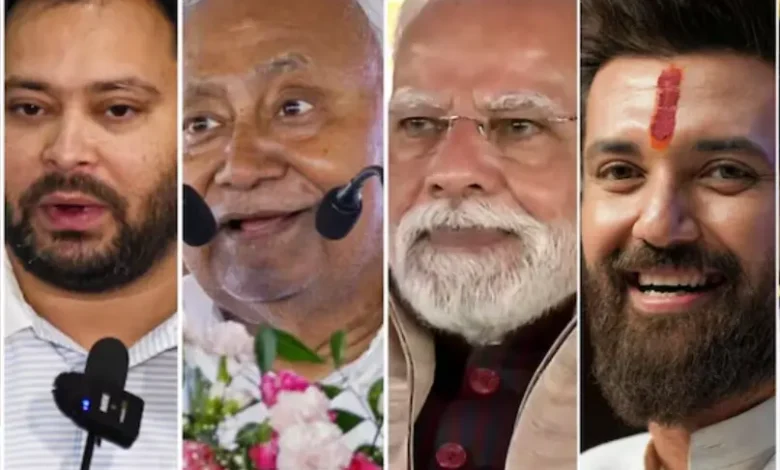Bihar Election: NDA Alliance Equally Matched in First Phase with Prashant Kishor’s Party Emerging as Game-Changer

Bihar Election: The first phase of the Bihar elections, scheduled for November 6, is a closely contested contest between the National Democratic Alliance and the Opposition mahagathbandhan. Both coalitions are equally positioned to win 121 Assembly Seats. Prashant Kisor’s Jan Suraaj Party, which was recently formed by him, could have a significant impact on the outcome of this important Bihar election.
Bihar’s election results are similar to the Assembly elections of 2020, which were very close. The mahagathbandhan won 61 of the 59 constituencies in Bihar’s previous election. Raj Kumar Singh of the Lok Janshakti Party, who later joined Janata Dal-United, claimed Matihani, the remaining seat in Begusarai District.
This Bihar election brings a brand new factor with Prashant Kishor’s Jan Suraaj Party. It was founded in October 2024 and uses the “school bag” as its symbol. This party is positioned as the third option in Bihar’s election scene, with a focus on issues such as unemployment, migration, and corruption, which resonate with the voters throughout the state.
Also Read: Bihar Election Dates Announced: Two Phases of voting on November 6th and 11th
Nawal Kishore Chaudhary, political analyst, explained Bihar’s current election situation, saying, “Both contesting parties are in a tight, tough spot, and have almost the same number of seats.” This time around, Kishor JSP may be able to sabotage some candidates’ chances in some areas. Choudhary responded that, when asked which alliance would be more affected by Kishor’s party, “Let’s wait until the candidates of Kishor’s party are announced on the seats, and then it will become clear.”
In the first phase of the Bihar elections, the JDU-led NDA and the RJD-led mahagathbandhan are in fierce competition. In these crucial Bihar elections, both alliances strategically leverage caste calculations to increase voter appeal.
Jan Suraaj’s entrance into Bihar’s election marks a major shift in state politics. This campaign focuses on the people and addresses concerns that Bihar has had for a long time about migration, unemployment, and other issues. The party’s people-focused campaign could attract voters who are disillusioned by traditional political formations during the Bihar elections.
Bihar’s first-phase election results could be a deciding factor for the subsequent phases. November 6 is, therefore, a date that all parties should pay attention to. The Bihar elections will depend on the success of voter mobilization and last-minute campaigns. Candidates are facing stiff competition in every constituency.
The Election Commission of India conducts the Bihar Assembly Elections to elect members to the 243-member Bihar Legislative Assembly. State elections are conducted in phases, the first covering 121 districts and constituencies. Bihar’s elections are often a good indicator of the political climate in Eastern India, and they can influence national politics.





